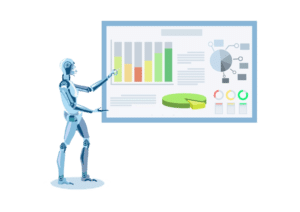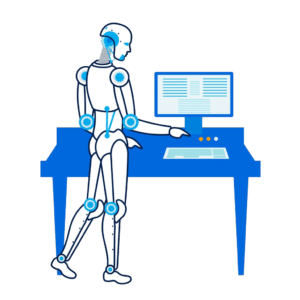At the intersection of robotic process automation (RPA) and artificial intelligence (AI) lies another discipline of process automation technology that is proving to be a key player for modern businesses: intelligent automation (IA). Like both RPA and AI, the potential benefits and returns on investment with IA initiatives are plentiful. But what even is IA? Why should you care about it? And how do you get started? Let’s dive in.
What is Intelligent Automation (IA)?
Intelligent automation is an industry term used to describe the supplementation of RPA with AI. By applying artificial intelligence to automation, you gain an added level of effectiveness–meaning you can do more with your data and accelerate digital transformation. This philosophy of smart elevation also lends its name to the EPSoft Intelligent Automation Platform, our cohesive solution aimed at improving every aspect of the workflow. It provides a suite of smart tools for everything from BPM and process mining to service orchestration, AI, and beyond. Learn more about the platform here.

How to Get Started with IA
Getting started with intelligent automation can seem like a tall order, but a few thoughtful steps can help kick things off in the right direction. Here are 3 things you can do, starting today:
- Establish baseline expectations and create a strategy focused on them:
The transformation part of digital transformation is there for a reason. It’s a big deal with big changes–and huge benefits. Every journey needs a roadmap. Start yours. What does success look like? How will you build your optimal business process? What parts of your process do you need to document? How will you prioritize automation needs? Begin to visualize how these answers play out, and put them in context of departments and business objectives. A clear vision and an accompanying strategic plan are the only way to facilitate a smooth journey. - Start building a team:
The best automation initiatives feature a smart team of talent dedicated to their success. Consider investing in both internal staff who can fulfill new important roles in project management and data science, as well as new outside talent with skills specific to change management, AI, and RPA. - Take a test drive:
One of the most powerful ways to understand technology is to see it in action. And don’t be afraid to start small. Trying to tackle everything at once can quickly overwhelm teams and processes, and automation projects fall apart before they could even get off the ground. You don’t have to have all the details ironed out to get started–you just have to have the right ones. With smart tools in hand to help you understand the right things about your process, you can implement change quickly, strategically and incrementally, attacking with precision instead of force. This kind of foundational groundwork not only allows you to learn and grow sustainably, but it also paves the way for end-to-end digital transformation.
Before initiating any automation project, watch a demo and schedule a personalized consultation to gain a firsthand look at how it all works behind the curtain. Read more about the EPSoft Intelligent Automation Platform here and discover how we can deliver end-to-end automation solutions for your business. Schedule your own free consultation today.


